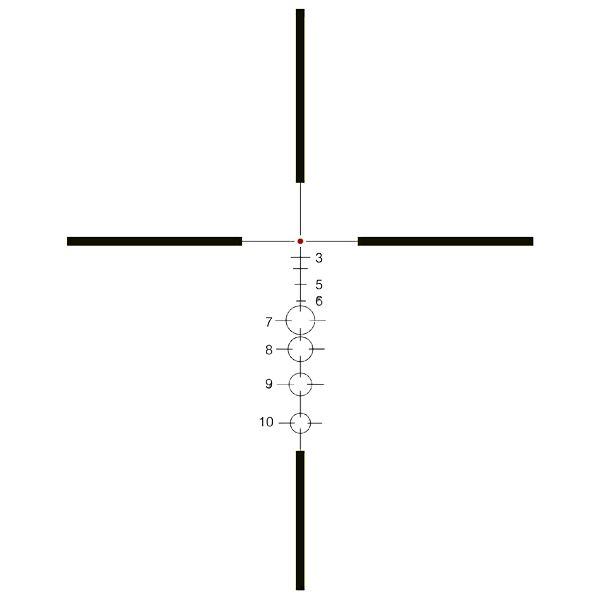
This image has format transparent PNG with resolution 600x600.
You can download this image in best resolution from this page and use it for design and web design.
Scope PNG with transparent background you can download for free, just click on download button.
A telescopic sight, commonly called a scope, is an optical sighting device based on a refracting telescope. It is equipped with some form of a referencing pattern (a reticle) mounted in a focally appropriate position in its optical system to give an accurate point of aim. Telescopic sights are used with all types of systems that require accurate aiming but require magnification, as opposed to using non-magnifying iron sights, reflector (reflex) sights, holographic sights or laser sights, and are most commonly found on firearms, particularly rifles. The optical components may be combined with optoelectronics to form a digital night scope or a "smart" scope. Scope sights are usually attached to a firearm with a scope mount.
Telescopic sights are classified in terms of the optical magnification (i.e. "power") and the objective lens diameter. For example, "10×50" would denote a magnification factor of 10, with a 50 mm objective lens. In general terms, larger objective lens diameters, due to their ability to gather a higher luminous flux, provide a larger exit pupil and hence provide a brighter image at the eyepiece.
There are also telescopic sights with variable magnification. The magnification can be varied by manually operating a zoom mechanism. Variable-power sights offer more flexibility regarding shooting at varying ranges, targets and light conditions and offer a relative wide field of view at lower magnification settings. The syntax for variable sights is the following: minimal magnification – maximum magnification × objective lens, for example "3-9×40" means a telescopic sight with variable magnification factor between 3 and 9, and a 40 mm objective lens. Variable-power telescopic sights in the low magnification range (1-4×, 1-6× or 1-8×, even 1-10×) are informally referred to as low-power variable optics (LPVO).
Confusingly, some older telescopic sights, mainly of German or other European manufacture, have a different classification where the second part of the designation refers to 'light gathering power.' In these cases, a 4×81 (4× magnification) sight would be presumed to have a brighter sight picture than a 2.5×70 (2.5× magnification), but the objective lens diameter would not bear any direct relation to picture brightness, as brightness is affected also by the magnification factor. Typically objective lenses on early sights are smaller than modern sights, in these examples the 4×81 would have an objective 36 mm diameter and the 2.5×70 should be approximately 21 mm (relative luminosity is the square of the exit pupil as measured in mm; a 36 mm objective lens diameter divided by the 4× magnification gives an exit pupil of 9 mm; (9×9=81).
A relatively new type telescopic sight, the prismatic telescopic sight or prism scope, does away with the image erecting lens system of a traditional telescopic sight by replacing it with a prism image erector (similar to what is found in binoculars and spotting scopes). The reticle for this type of sight is etched onto one of the prism's reflection surfaces. This allows an easy way to illuminate the reticle (from the back side of the prism) and presents the viewer with a reticle even when the illumination is turned off. Since its an optical telescope, prism scopes can compensate for a user's astigmatism and, when used as a 1x sight configuration, are an alternative to reflector sights. One example of a well known series of prismatic sights is the Trijicon ACOG.
In this page you can download free PNG images: Scopes PNG images, sights PNG, aim PNG optic